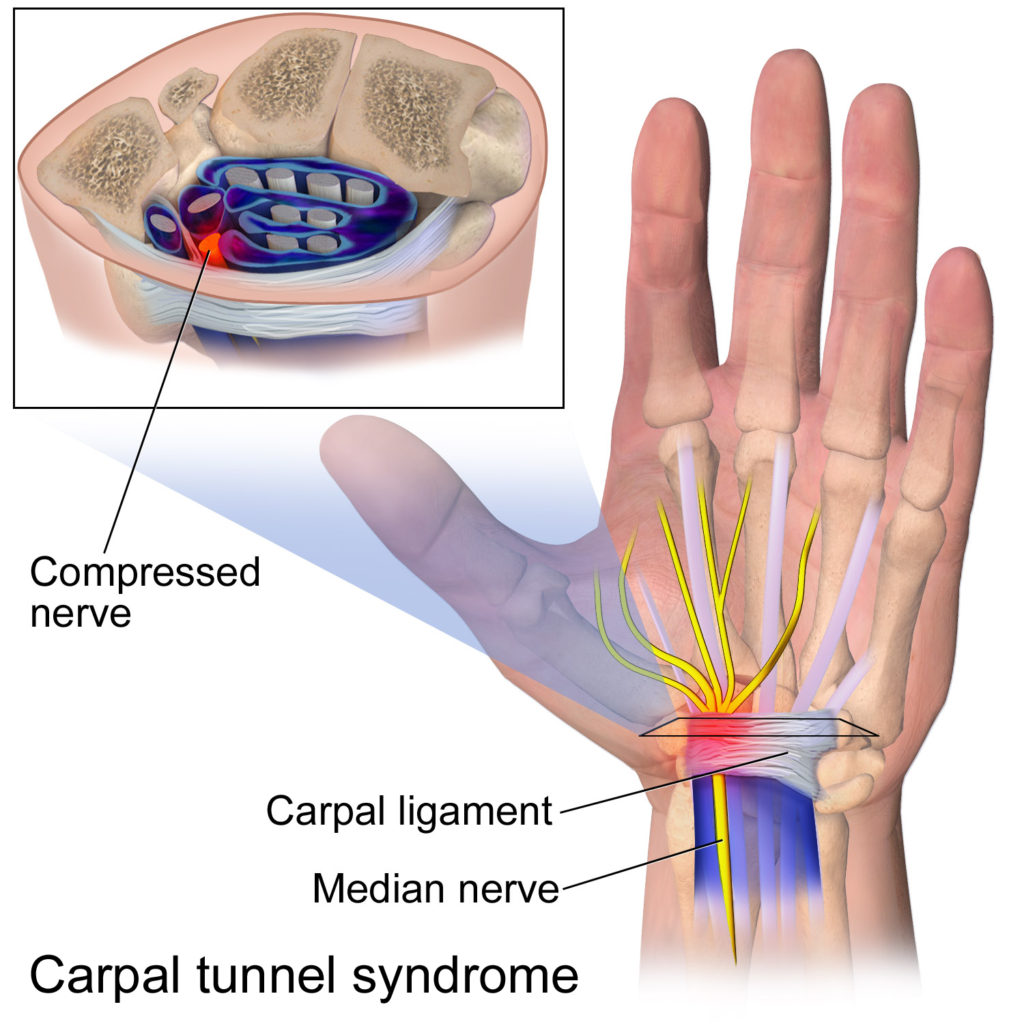Carpal tunnel syndrome (CTS) is a prevalent condition that affects many individuals, causing pain, numbness, and weakness in the hand and wrist. Its diagnosis hinges on the symptoms and clinical examinations; however, misdiagnosis is common due to overlapping symptoms with other conditions. This article explores two such conditions often misidentified as carpal tunnel syndrome: ulnar nerve entrapment and cervical radiculopathy. Understanding these conditions and their distinctions from CTS can lead to more accurate diagnoses and appropriate treatments.
What are two conditions that are often misdiagnosed as carpal tunnel syndrome?
The two primary conditions that are often misdiagnosed as carpal tunnel syndrome are ulnar nerve entrapment and cervical radiculopathy. Ulnar nerve entrapment occurs when the ulnar nerve is compressed at the elbow or wrist, leading to symptoms similar to CTS, such as numbness and tingling in the hand. Cervical radiculopathy involves nerve irritation in the neck, which can cause radiating pain and sensory changes in the arm and hand, often mimicking CTS.
Understanding Carpal Tunnel Syndrome
Carpal tunnel syndrome arises when the median nerve, which runs from the forearm into the palm, becomes compressed at the wrist. Common causes include repetitive hand movements, wrist anatomy, and conditions like diabetes or hypothyroidism. Symptoms typically manifest as:
- Numbness or tingling in the thumb, index finger, middle finger, and part of the ring finger.
- Weakness in the hand and difficulty in grasping objects.
- Pain that radiates up the arm or into the shoulder.
Diagnosis usually involves a physical examination, patient history, and sometimes nerve conduction studies.
1. Ulnar Nerve Entrapment
Ulnar nerve entrapment, often referred to as ulnar nerve compression, is another condition that can present symptoms similar to CTS. This condition occurs when the ulnar nerve, which runs along the inner side of the arm, becomes compressed, particularly at the elbow (cubital tunnel syndrome) or wrist.
| Symptoms of Ulnar Nerve Entrapment | Symptoms of Carpal Tunnel Syndrome |
|---|---|
| Numbness and tingling in the ring and little fingers | Numbness and tingling in the thumb, index, and middle fingers |
| Weakness in grip strength | Weakness in thumb opposition |
| Symptoms often worsen at night | Symptoms can worsen with certain hand positions |
| Pain along the inner side of the elbow | Pain may radiate up to the shoulder |
Ulnar nerve entrapment may be mistaken for CTS because of the shared symptom of hand weakness and discomfort. However, patients with ulnar nerve issues typically do not experience symptoms in the thumb and index finger, which are hallmarks of CTS. Diagnosis often involves a thorough examination of the elbow and wrist, along with nerve conduction studies to assess the function of the ulnar nerve.
Treatment options for ulnar nerve entrapment include:
- Activity modification to reduce repetitive stress on the elbow.
- Splinting or bracing to keep the elbow straight, especially at night.
- Physical therapy focused on stretching and strengthening exercises.
- Surgical intervention if conservative measures fail.

2. Cervical Radiculopathy
Cervical radiculopathy occurs when a nerve in the neck becomes irritated or compressed, leading to symptoms that may radiate down the arm into the hand. This condition can result from herniated discs, degenerative disc disease, or spinal stenosis.
| Symptoms of Cervical Radiculopathy | Symptoms of Carpal Tunnel Syndrome |
|---|---|
| Pain that radiates from the neck to the shoulder, arm, and hand | Pain localized to the wrist and hand |
| Numbness in the arm or hand, often in a dermatomal pattern | Numbness in the thumb, index, and middle fingers |
| Weakness in specific muscle groups of the arm | Weakness primarily in hand and thumb |
| Symptoms may increase with neck movements | Symptoms may increase with wrist movements |
Diagnosis of cervical radiculopathy typically includes a detailed clinical history, physical examination, and imaging studies such as MRI to visualize the cervical spine.
Treatment options may encompass:
- Physical therapy to strengthen neck and shoulder muscles.
- Medications like anti-inflammatories to relieve pain.
- Steroid injections to reduce inflammation around the affected nerve.
- Surgery in cases of severe compression or persistent symptoms.
Importance of Accurate Diagnosis
Misdiagnosing conditions like ulnar nerve entrapment and cervical radiculopathy as carpal tunnel syndrome can result in inadequate treatment. A comprehensive understanding of each condition is essential for healthcare professionals. Although these conditions share some overlapping symptoms with CTS, recognizing the differences allows for targeted treatments.
Patients experiencing symptoms in the wrists and hands should consult with healthcare providers who can undertake thorough evaluations, including physical exams and necessary diagnostic tests. This proactive approach ensures that individuals receive the appropriate treatment, leading to improved outcomes and quality of life.
Conclusion
Misdiagnosis of carpal tunnel syndrome can stall recovery and lead to unnecessary interventions. By distinguishing ulnar nerve entrapment and cervical radiculopathy from CTS, patients can achieve better management of their symptoms. Awareness of these conditions promotes informed discussions with healthcare providers, ensuring a pathway toward effective treatment and rehabilitation.


